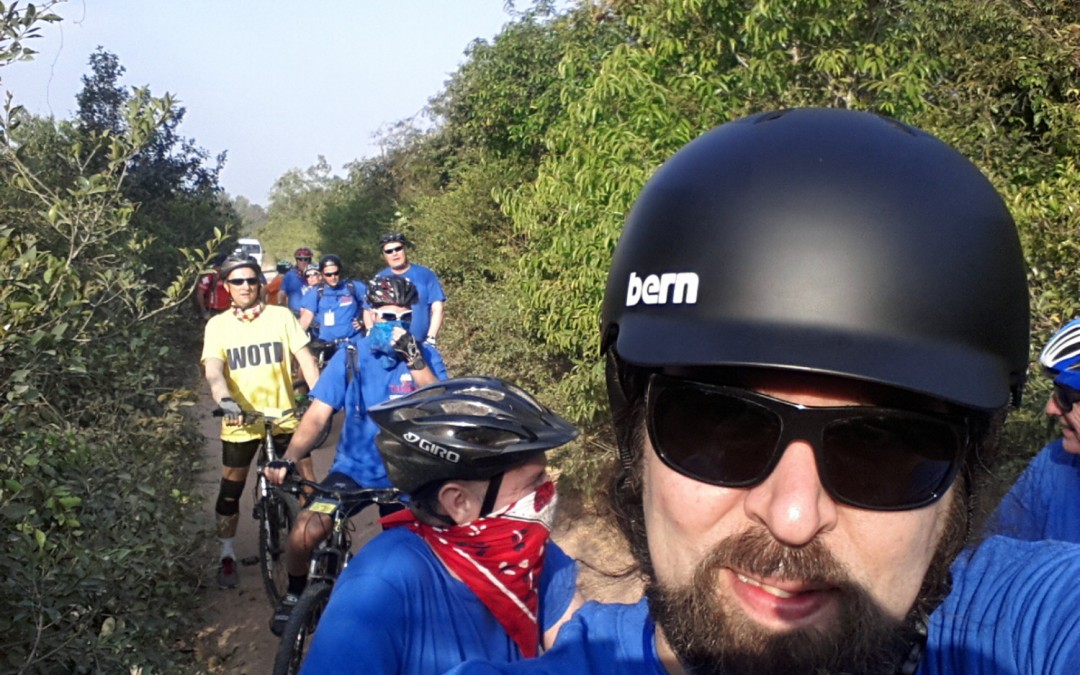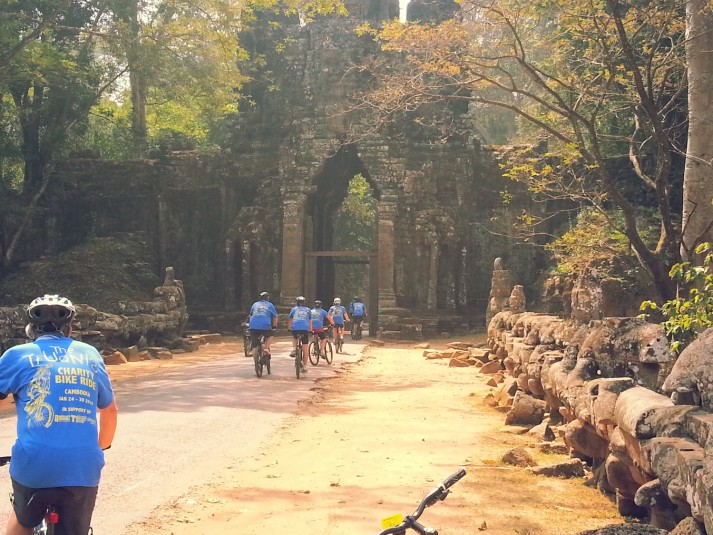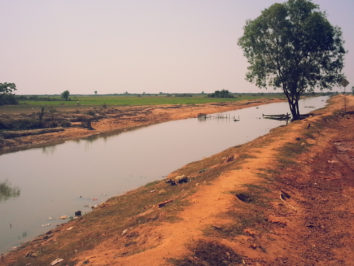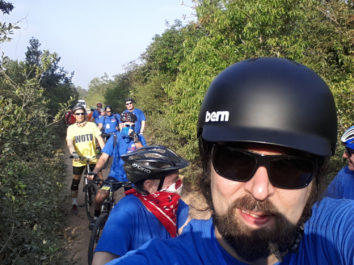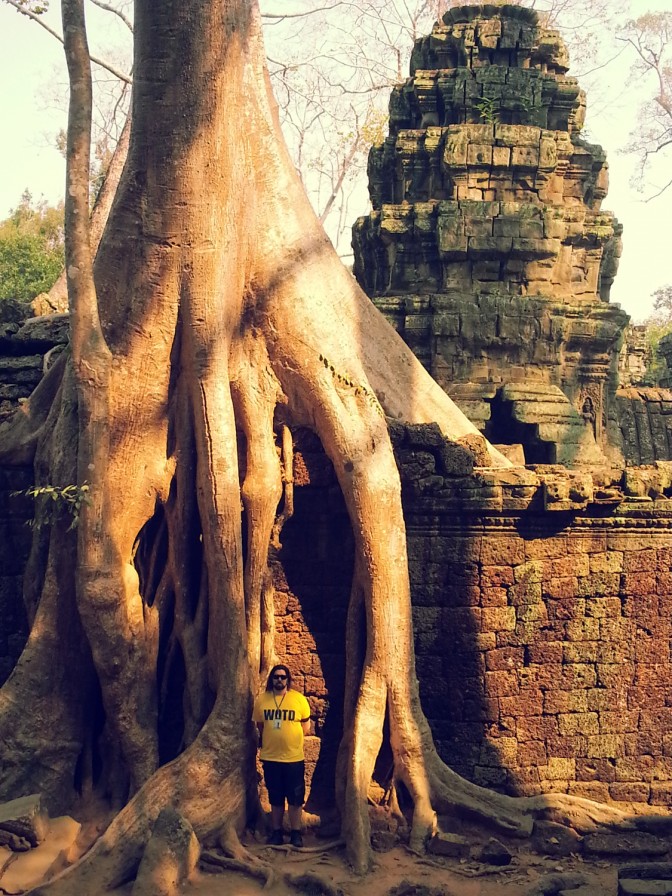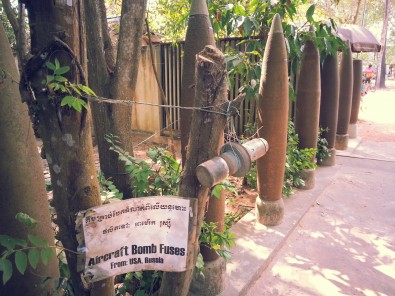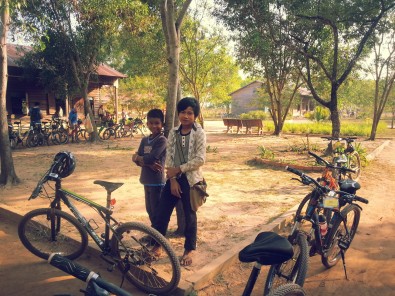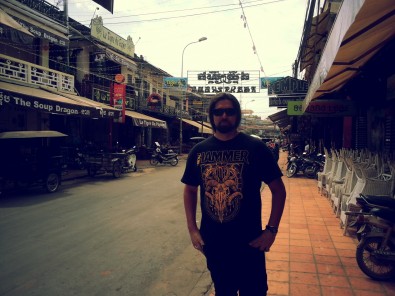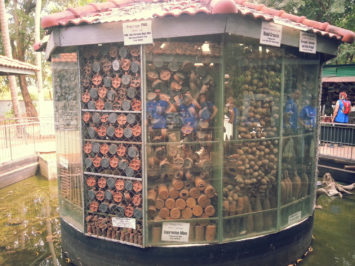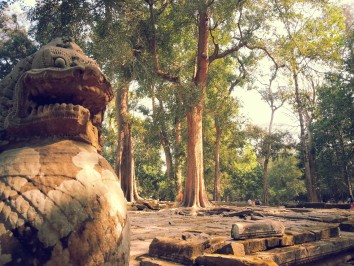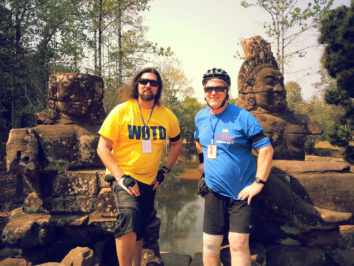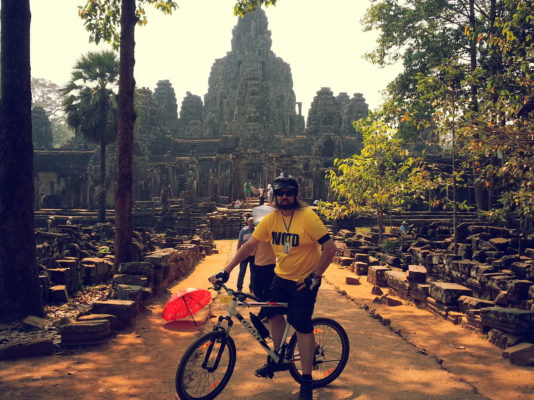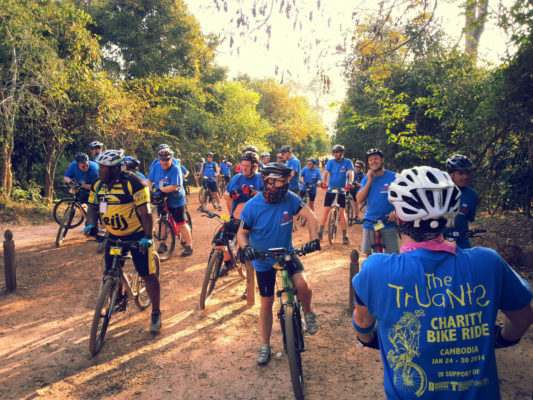“Any square kilometre here might hold up to 2,500 explosives, and that isn’t just mines, it’s grenades, clusterbombs, RPGs….” Right now a well-spoken American, an ex-soldier, is matter-of-factly relating the tragic legacy of Cambodia’s war-torn past, and it’s given the prospect of cycling here an unexpected dimension “The aim of most of this isn’t to kill, but to maim. Think about it, what costs your enemy more, burying a body or caring for a paraplegic? And over here you’ve got your toe-poppers…”
It’s mid-morning at the Cambodian Landmine Museum, a warehouse of awful relics which works as a grassroots conduit for education and funding for this scarred country’s colossal clearance efforts. It’s a sharp contrast to the resplendent jungles and endless flood-plains we’ve already seen on the first leg of our 150-mile charity cycle to benefit kids with cancer, kids who can benefit from music therapy, and kids who need a lifeline. With that in mind, no hill or heat seems too great. We’ve a long way to go, but already it feels like a different world.
After a short hop from Singapore over the endless floodplains of the Mekong Delta the first thing you’re hit with is the blasting jungle heat and countless tourist-shops full of little hand-carved Bhuddas and Hindu gods nestled alongside books like, ‘First They Killed My Father’ and, ‘Stay Alive, My Son.’ It’s that juxtaposition of histories – of Cambodia’s grand origins and its devastating recent years – that’s echoed time and time again here. On the one hand, you have the ancient the legacy of the Khmer empire, an ancient political dynasty that’s left the area in and around Angkor Wat littered with breathtakingly well-preserved temples that have been slowly reclaimed by the jungle over the last millenium. On the other, you have this ceaselessly friendly population’s seemingly ubiquitous youth. You seldom meet people over 40 here, and those who you do are often orphans, a grim testament to the hideous actions of the Khmer Rouge who’s genocidal reign halved this country’s population to the indifferent world’s heinous discredit. To my own shame, the extent of my knowledge of this place before I came here consisted of an appreciation of the Dead Kennedys and a viewing of the Killing Fields many moons ago. That said, no education can substitute the experience of knowing that at any point you may be passing one of 19,000 mass graves that fill the landscape.
As we pedal off from this sad museum it’s safe to say we won’t be taking any shortcuts. We aren’t here to sightsee, but to push ourselves to the limit, and one day in it’s already becoming a high-bar to reach. By 10AM it’s already over 30 degrees outside, and the conditions are tough – sandy trails feel like glue on the wheels, the only respite being the occasional paved roads littered with endless Tuk Tuks who all seem to be waiting for some unseen tourist invasion. For the most part, it’s long, winding and treacherous paths through the mosquito-filled wilderness punctuated by the occasional, utterly gobsmacking appearance of immaculately-carved ruins overgrown with silvery trees so large they seem unreal. In the sweaty, jet-lagged delerium it all feels like a dream.
We’re assured by our forever-joking local guide Sam that this is chilliest time of the year, and summer temperatures climb well over 40. It wouldn’t be right if this was easy – for years the Truants, this charity cycling group started by Iron Maiden manager Rod Smallwood has learned to grin and bear it through some of the toughest cycling conditions around in the name of children in need. A 40-strong cross section of riders from every walk of life, there’s an uncomplaining, fraternal spirit here that’s as infectious as it is inspiring. It sounds like the sort of thing you’re supposed to say, but knowing that putting yourself through this ordeal – the dull and then excruciating ache that climbs up your back after hours in the saddle, the friction burns, the bone-jarring spills, the 6am starts – can actually make a difference to some very vulnerable people makes all the difference, and the outpouring of support from donors is a powerful motivator. And unlike many endurance sports, cycling is meditative – your mind retreats somehow and the world becomes a blurred carousel of laughing locals, vast floodplains and dense jungles dotted with hidden villages and strange relics from centuries and centuries gone by. It makes the constant discomfort bearable, and the experience life-changing.
And then it happens – a hill in the distance comes into view and you realize you’re looking at the topmost, 700-foot stone spire of one of the most staggering feats of architecture the world has ever seen. You may have seen pictures of Angkor Wat, but until its blackened stone fills the horizon it’s impossible to appreciate just how marvelous it really is. The privilege of walking among those stone spires is difficult to describe, and an incredible fringe-benefit to a physical ordeal that, after a short rest-stop, resumes at a dizzying pace. As testament to this group’s purpose no one gloats at being fastest, and the slowest riders get a round of applause because this isn’t a competition, it’s about raising a bit of money and doing something good for the most vulnerable people around. As we get nearer to the finish-line, there’s a distinct sense of never being finished. As Cambodia’s shown us beyond all doubt, there’s simply too much work left to do.
To donate to the Truants, with all proceeds going to Nordoff Robbins, Childline, and Teenage Cancer Trust, please go to www.justgiving.com/milas
For more information on Teenage Cancer Trust, go to www.teenagecancertrust.org
For more information on Nordoff Robbins, go to www.nordoff-robbins.org.uk
For more information on Childline, go to www.childline.org.uk
For more information on the Cambodian Landmine Museum, go to www.cambodialandminemuseum.org

